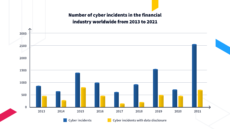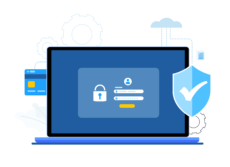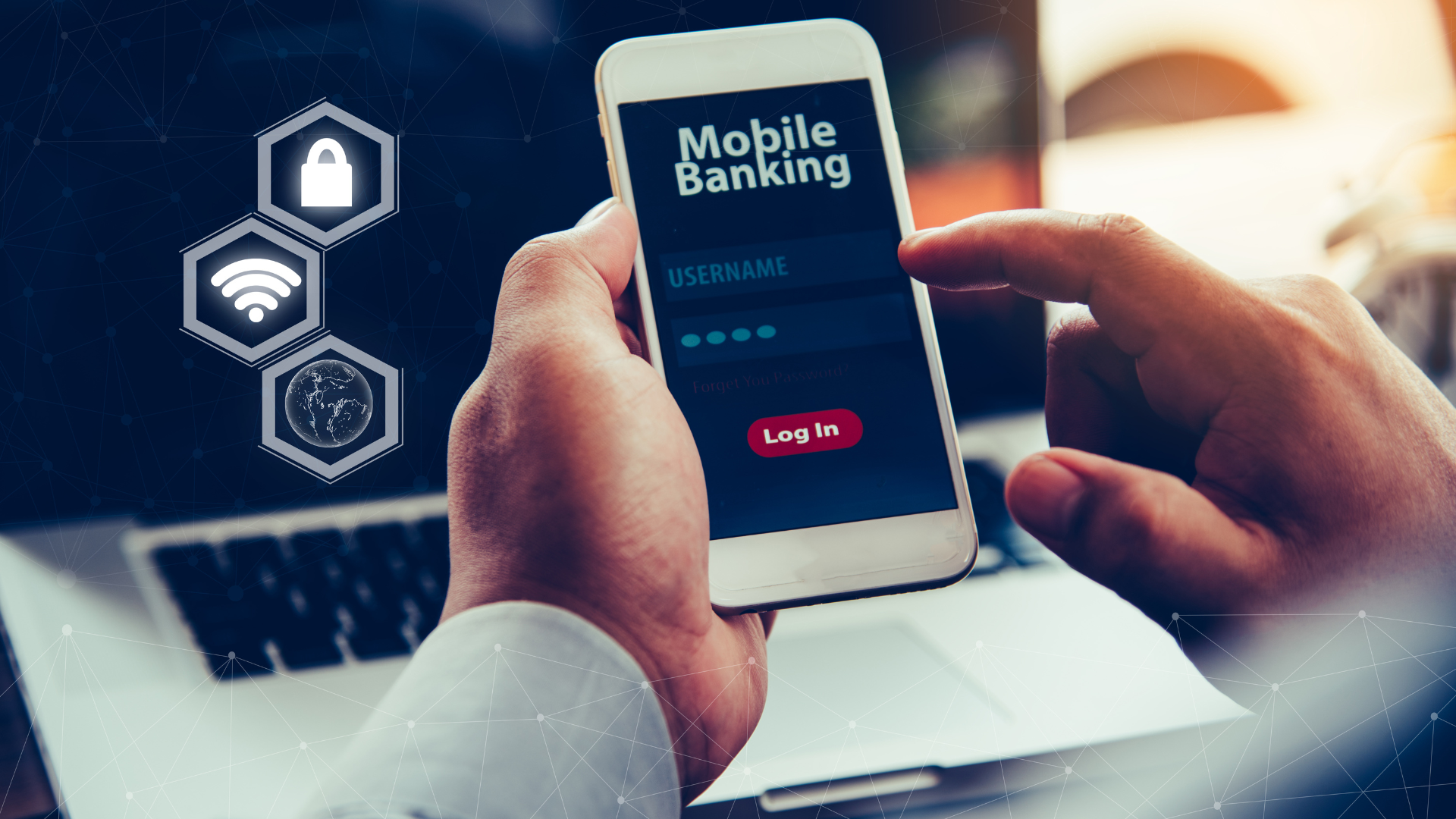There is bad news. Hackers shifted part of their focus to the creation of mobile threats. That’s why all organizations should put more emphasis on security. Particularly when it comes to mobile banking security. But we have good news. We know exactly how to secure your mobile app against cyberattacks! And how to avoid situations like those mentioned below.
Revolut and Uber have suffered a huge data breach. Both incidents took place as a result of a social engineering attack. When it comes to financial institutions such as Revolut, the worst long-term consequence is the loss of customer trust. However short-term consequences also can be harmful, mainly financially. Companies should constantly strive to provide the maximum level of protection. This is what all customers expect.
Malware prevention should be embedded in every app which stores sensitive data. Especially banks should implement the best application security software.
Additionally, companies should pay more attention to training their employees on safety issues.
End users shouldn’t have to think if are mobile banking apps safe. It’s should be a standard. When cooperating with trustworthy partners such as Finanteq and Promon you can avoid security crises like Revolut had.
Is mobile banking safe in your case? Or do your customers have to think of another banking security app? Banking app security is a basic fundamental user requirement. Doubt if your app is secure? Continue reading.
Cyberattacts in the financial industry
The banking industry is particularly exposed to cyberattacks. According to the latest Statista data, financial institutions experienced a $167% increase in cyber incidents compared to the previous year. What is more, the number of on-device fraud is growing significantly. And the upward trend remains steady. Why is that? Banking applications store sensitive data that are especially relevant for hackers. Later in the article, I will give examples of what hackers can do with stolen dates.

Source: Statista
What kind of cyberattacks happen most often? Let’s see.
Common types of attacks on mobile banking apps
In this paragraph, I want to focus on 5 common types of attacks targeting financial institutions.
Mobile banking trojans constantly remain one of the biggest threats to mobile banking. It’s a virus that through malicious code that works within an app is able to steal user-sensitive data.
Secondly, keyloggers. The number of keylogger attacks increased. Keyloggers are an activity-monitoring software that allows hackers to get user’s data. Contrary to code attacks, keyloggers do not penetrate the app but record every keystroke the user types. Hackers can steal sensitive data such as user ids, passwords, account details, and SMS messages.
Next, accessibility framework attacks. It’s a malware manipulating Android’s accessibility framework. The Android accessibility framework is developed to help users with physical disabilities. Mobile developers can use Accessibility Application Programming Interface (API) methods to deliver custom accessibility services in their own mobile apps.
However, the availability service has access to critical, sensitive information, including those about currently running applications and account. Attackers could exploit such a vulnerability to launch various types of attacks.
Now let’s move on to overlay attacks. It is a type of cyberattack on mobile application users. It involves a malicious application opening an active window over a legitimate program. This layer can fully replicate the interface of the target product or be transparent. The overlay can capture the user’s actions on the screen. Hackers deploy overlay attacks to steal user’ information, such as login credentials or bank card details.
Android devices are most vulnerable to overlay attacks. Why? Because apps downloaded from Google Play have the SYSTEM_ALERT_WINDOW permission by default.
Finally, man-in-the-middle attacks (MITM). A mobile app that’s vulnerable to MITM attacks can allow a hacker to capture, view, and modify sensitive information sent and received between the app and backend servers. Public Wi-Fi networks are a common playground for hackers. It’s important to educate bank customers to not to use open WI-FIs while running mobile banking apps.
The range of threats is growing, and every business should constantly work on securing its applications.
Dangerous links
Probably each of us has received a suspicious text message or e-mail. Both, customers and employees should be aware of different types of phishing scams. Here’s the role of awareness campaigns. That’s why promoting safe banking habits became a significant part of banks’ strategies.
Recently Santander Bank Polska launched an interesting action – “Fairy Tales for Adults.” Financial institutions should educate their customers on how to prevent cyberattacks and data interception attempts. And banks are approaching this responsibility in more and more creative ways. We like it very much!
Commonly, human errors and inattention, and user omissions, e.g., not updating operating systems or not keeping applications up to date are the main threats to online security. Hackers are using methods that are becoming harder and harder to spot. It is why increasing your customers’ risk awareness should be bank’s responsibility.
Stolen data and passwords
What do hackers do with your customers’ stolen information?
- Using credit or debit card information for shopping;
- Applying for credit cards or loans in your customers’ name;
- Accessing your customers’ bank accounts;
- Selling all information on the dark web.
What implications does this have for financial institutions? According to, the latest IBM Security Report, compering to the last year, the average cost of a data breach rose to $4.4 million this year. The financial losses of the organizations that fell victim to the attack are enormous.
However, as I mentioned in the beginning, the worst consequence is the loss of customer trust and the negative impact on customer experience.
Although security is a priority, security incidents do occur. How can banks protect themselves? Let’s check!
Banks’ ways to improve application security
Fortunately, banks have a wide range of possibilities to make online and mobile banking save. Besides the solutions required by law, banks can implement app-specific security features.
At Finanteq we always suggest our clients the best banking software development solutions. Technical Excellence it’s one of our values and it stands for top-notch code quality and security. We always follow the best code security practices. Which one? I will cover in a separate article.
Now let’s move on to the must-have security features for mobile banking applications.

Advanced multi-factor authentication
Two-Factor Authentication is an extra layer of security that requires two different forms of identification to access your data. First, username and password. We can distinguish the following types of 2FA:
- SMS Text-Message and Voice-based 2FA
- Software Tokens for 2FA
- Push Notifications for 2FA
- Biometric 2FA
Worth mentioning here is that we cooperate with Polish Security Printing Works (PL: PWPW). Thanks to their free eDO app, banks customer can verify themselves via the application and among other possibilities, can for example open a bank account completely remotely.
All the benefits of using the eDO App you will find at this link.
End-to-end encryption that prevents information leakage
It is a security system that scrambles the message sent from one user to another so that only the sender and receiver can read it. Any person or computer program in between cannot read the messages. End-to-end encryption mobile banking apps rely on TLS/SSL certificate-based authentication in order to create a secure connection.
Thus, if you are looking for a mobile app development company, that offers end-to-end encryption to save your confidential information from leakage, you’ve come to the right place!
Instant security alerts
Push notifications can play important role in the field of mobile banking app security. However, the message should be structured in a way that does not frighten the bank’s customers. Banks can use push notifications to keep app users informed about potential fraud.
- Notifications regarding account changes
It’s one of the most common mobile alerts that warn bank customers about any changes to their accounts. Banking apps offer an instant alert whenever there is a change in the user’s data, such as a new password, address, phone number, or email address.
- Alerts regarding the irregular activity
Similar to the previous alert, it notifies app users of suspicious account activity. This type of notification may include information about unusual purchases made from suspicious locations.
Application shielding
At FINANTEQ, we ensure the highest level of mobile banking protection. Even if, you secure the application according to the best market practices, new threats and further possible attack vectors arise after the launch. These are eliminated, fortunately, by the Runtime Application Self-Protection (RASP) offered by Promon. They product: SHIELD™ it’s an app shielding for Android and iOS. It decreases the risk of threats such as overlay attacks, debuggers, emulators, and other mechanisms used by cybercriminals targeting mobile applications.
This is an ideal complement to the protection of the mobile application.
Final thoughts
From the first line of code, security in mobile and online banking is a top priority. A reliable technology partner with documented history in mobile banking app development is a guarantee of creating and maintaining a safe banking app.
At Finanteq we are extremely focused on code quality and security of mobile banking apps.
Thanks to our experience we have created a Mobile Banking Platform that can be easily tailored to your business needs with our components.
Choosing us will set you apart with a one-of-a-kind native experience.
Mobile banking development in the native technology means the highest level of security, access to native functionality, and design that is limited only by your imagination – not technology.
Are you looking for the right vendor to create a top-notch mobile app?
Contact us!









